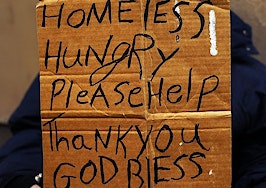Even as nationwide rental rates continue to soar, some parts of the country are already seeing stabilization, according to CoreLogic’s latest data released Tuesday.
Nationwide, the cost of renting a single-family home grew by 3 percent to an average of $1,419 a month in October, up from a year ago when rent had grown by only 2.7 percent. Affordable housing, or properties with rent prices less than 75 percent of the regional median, saw the highest growth spikes at 3.9 percent.
In cities with strong economies and job growth but limited construction, rental rates soared. At 6.6 percent growth, Las Vegas experienced the highest increase in the country. In Orlando and Phoenix, rental rates grew by 6.4 percent and 5.3 percent, respectively.
“While employment growth helps feed rent growth, this relationship doesn’t always hold up, especially for cities with very high rents,” said Molly Boesel, principal economist at CoreLogic, in a prepared statement. “For example, employment growth in Seattle this October was more than double that of the U.S., but rent growth during the same time period was weak.”

Courtesy of CoreLogic
Despite monthly fluctuations, however, nationwide rent growth has slowed modestly since peaking at 4.2 percent growth in February 2016. It also stabilized over the last year with a monthly average of 2.9 percent. High-end rental properties, in particular, have dropped steadily to 2.6 percent this October, down from a 2.9 percent peak in June.
While modest, such changes could indicate that a shift in the market is on the horizon — and, according to CoreLogic, there are limits to which rents can rise in a short time. In Seattle, which currently has some of the highest housing costs in the country, rental rates grew by only 0.3 percent in the last year.
“Of the 20 metros analyzed in the CoreLogic SFRI, Seattle ranks among those with the highest rent, which suggests there is a limit to how much rents can increase,” Boesel said.

Courtesy of CoreLogic








